|
Type 2 Seaplane Fighter
Nakajima
A6M2-N 1942 - 1945
RUFE
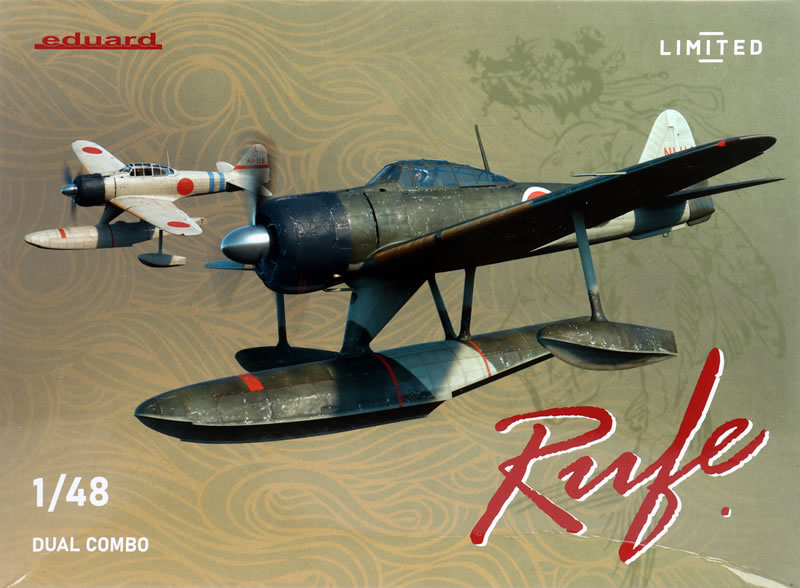
Eduard Limited Edition, Dual Combo
1/48 scale
S
u m m a r y |
| Catalogue Number: |
Eduard Kit No. 11171 - RUFE Type 2 Seaplane Fighter Nakajima A6M2-N 1942 - 1945 |
| Scale: |
1/48 |
| Contents and Media: |
Two complete models included. Total parts - 296 parts in grey coloured plastic (including 48 marked not for use); 54 parts in clear (28 not used); two colour photo-etched frets; self-adhesive die-cut masking sheet; markings for eight aircraft |
| Price: |
USD$97.95 plus shipping,
available online now from Eduard
GBP£59.99 (£49.99 Export Price) plus shipping available from Hannants |
| Review Type: |
FirstLook |
| Advantages: |
Accurate; high level of detail; outstanding surface features including crisply recessed panels and subtle raised textures where appropriate; assembly jig for engine cowling; includes ground handling trolley; colour photo-etched parts; separate control surfaces; includes die-cut canopy masks. |
| Disadvantages: |
None noted. |
| Conclusion: |
Eduard's 1:48 scale Rufe floatplane maintains the exemplary standards of this prolific Czech company.
The cockpit is comprehensive, surface textures are second to none, and the inclusion of the cowling assembly jig is further evidence of Eduard's ongoing innovation.
The floats will deliver a strikingly different look, and a nice variety of colours and markings will add to the interest.
With its relatively modest parts count, it looks like it should be a fairly quick build too. I hve built one of Eduard's 1/48 A6M2 Zeros and it was a pleasure from start to finish. I can't imagine that this will be any different.
There is a word for continuous improvement in Japanese - Kaizen. Even starting with a high bar, Eduard demonstrates plenty.
Oh Eduard, you've done it again! |
Reviewed by Brett Green

The Nakajima A6M2-N was a single-crew floatplane based on the Mitsubishi A6M Zero Model 11. The Allied reporting name for the aircraft was Rufe.
The A6M2-N floatplane was developed from the Mitsubishi A6M Type 0, mainly to support amphibious operations and defend remote bases. It was based on the A6M-2 Model 11 fuselage, with a modified tail and added floats. A total of 327 were built, including the original prototype.
The aircraft was deployed in 1942 and was only utilized in defensive actions in the Aleutians and Solomon Islands operations.

Such seaplanes were effective in harassing American PT boats at night. They could also drop flares to illuminate the PTs that depended on cover of darkness and were vulnerable to destroyer gunfire.
The Rufe also served as an interceptor for protecting fueling depots in Balikpapan and Avon Bases (Dutch East Indies) and reinforced the Shumushu base (North Kuriles) in the same period.
Rufe fighters served aboard seaplane carriers Kamikawa Maru in the Solomons and Kuriles areas and aboard Japanese raiders Hokoku Maru and Aikoku Maru in Indian Ocean raids.
In the Aleutian Campaign, the Rufe engaged with RCAF Curtiss P-40 Warhawk, Lockheed P-38 Lightning fighters and Boeing B-17 Flying Fortress bombers.

The aircraft was used for interceptor, fighter-bomber, and short reconnaissance support for amphibious landings, among other uses.
Later in the the war, the Otsu Air Group utilised the A6M2-N as an interceptor alongside Kawanishi N1K1 Kyofu ("Rex") aircraft based in Biwa lake in the Honshu area.
* Historical summary courtesy of Wikipedia
Eduard released the first of their 1:48 scale A6M Zero family in late 2021 with a Limited Edition, Dual Combo A6M2 Zero Type 21. This kit was labelled "Tora Tora Tora", and carried Pearl Harbour markings exclusively for the two kits contained in the carton.
They have followed up with eleven ProfiPACK, Overtrees and Weekend Edition 1:48 scale Zero variations throughout 2022 and 2023.
Eduard has now launched a Limited Edition, Dual Combo boxing of the Rufe Type 2 Seaplane Fighter Nakajima A6M2-N - quite a change from its land and carrier-based predecessors.
Eduard's Rufe boxing contains two full new-tool 1:48 scale Type 2 Seaplane Fighter Nakajima A6M2-Ns, which are made up from from a total of 296 parts in grey coloured plastic (including 48 marked not for use), 54 parts in clear (28 not used), two colour photo-etched frets, a self-adhesive die-cut masking sheet and markings for eight aircraft.
When you halve the number of plastic parts to come up with a parts-per-kit total, less the parts marked not for use and other unused optional parts, the total count is really not daunting at all.
Instructions with a four page illustrated history section plus detailed marking guide for eight aircraft are also included.
Surface texture is everything we have come to expect from Eduard - just gorgeous. There are very fine and crisply recessed panel lines, rivets and fasteners.
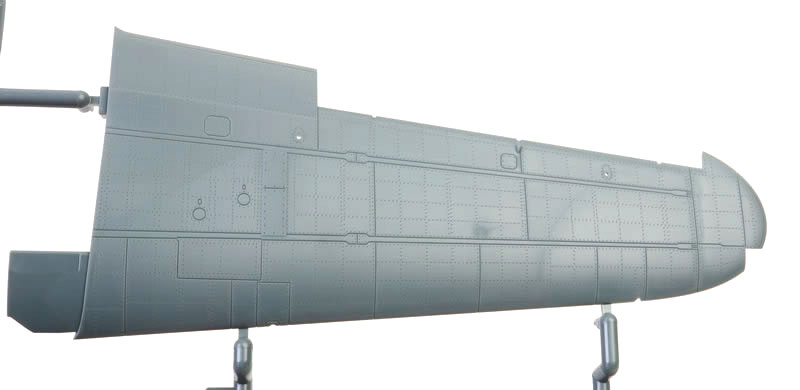
Assembly starts in the cockpit. Some structural detail is moulded onto the inside of the fuselage sides, and the front office is enhanced with Eduard’s excellent colour photo-etched parts.
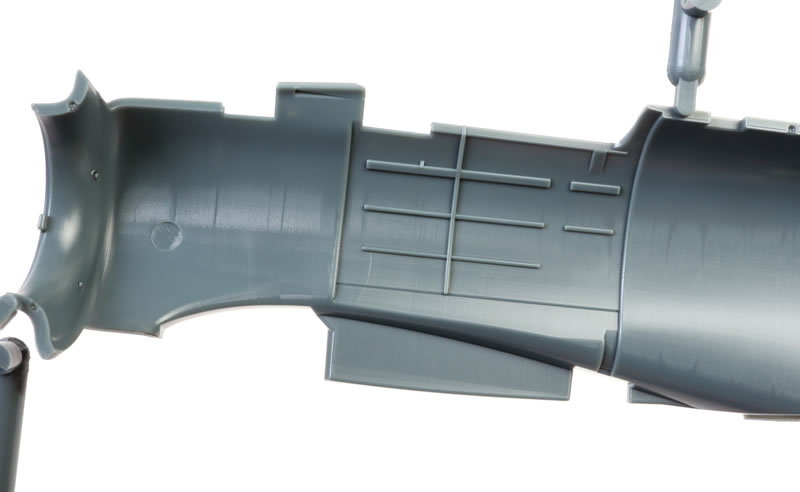
Separate parts are supplied for the switch panel, throttle quadrant, radios, side console, bulkheads and more. These are built up in layers on the inside of the fuselage halves.
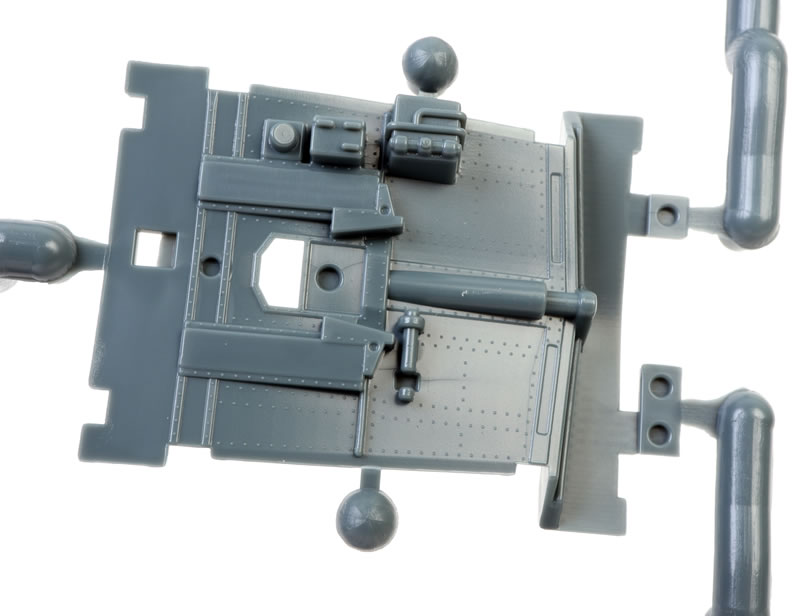
The instrument panel may be finished with either the supplied colour photo-etched parts or decals. If you prefer, you could paint the plastic parts yourself too – the choice is yours.
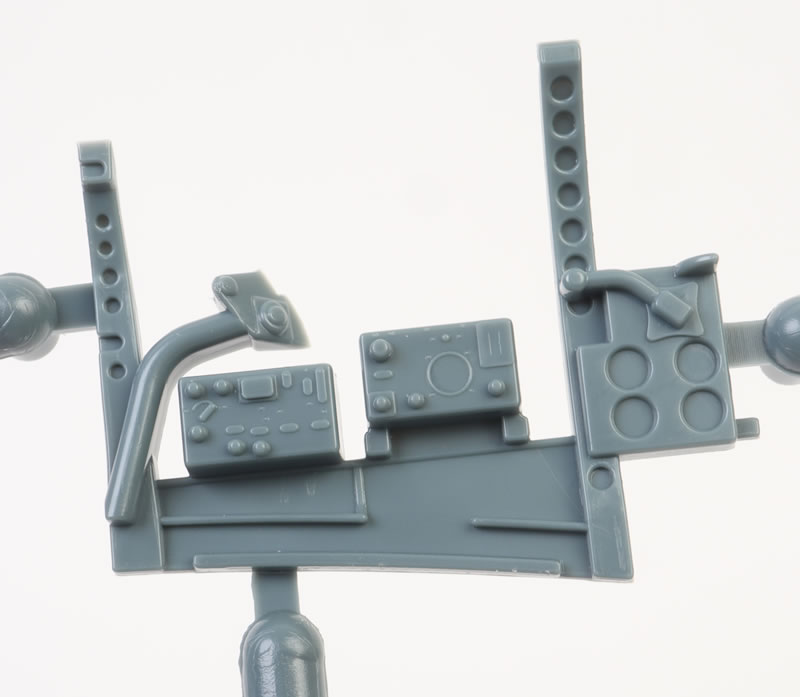
The one-piece seat is moulded with full perforations and it looks quite acceptably thin. If you want thinner still, Eduard is offering a 3D printed seat as an aftermarket option.
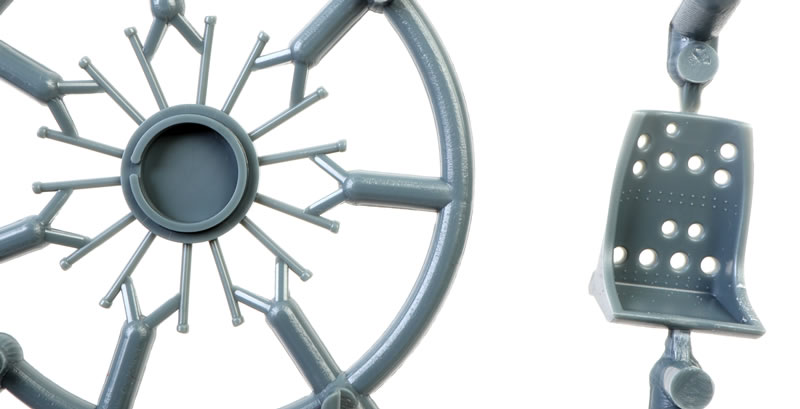
Colour photo-etched harness straps are also included.
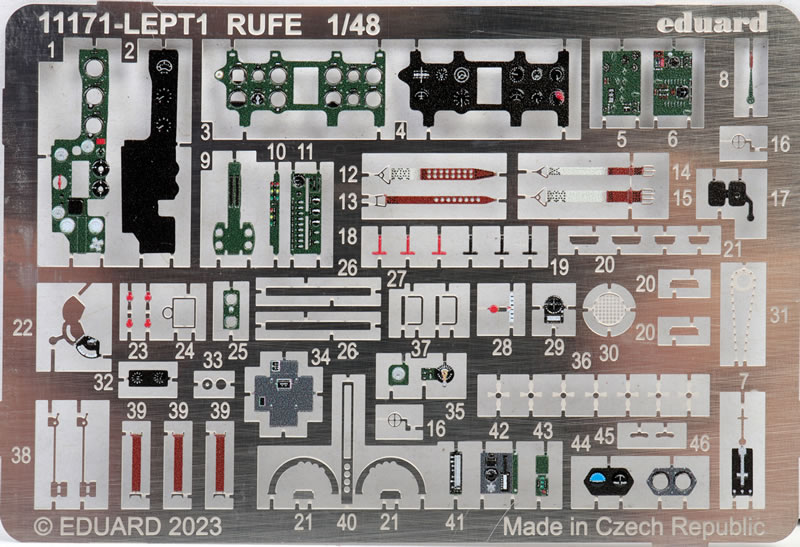
The cowl machine guns are also built into the front of the cockpit. The overall effect is suitably busy when this is all in place.
The engine is made up from just seven parts including the rear mount but detail is very crisp and fine. It will look very nice after careful painting and weathering.
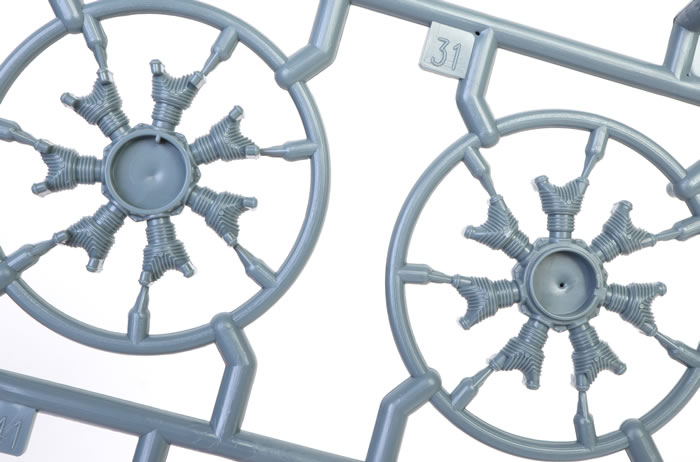
Eduard supplies a cylindrical jig to help align the cowling parts during assembly. The cowl is made up from two sides, a top part with the gun troughs moulded in place and a separate intake duct for the bottom of the cowling. The jig is a great idea. It offers the best of both worlds – nice deep detail free from sink marks plus perfect alignment if the jig is used correctly.
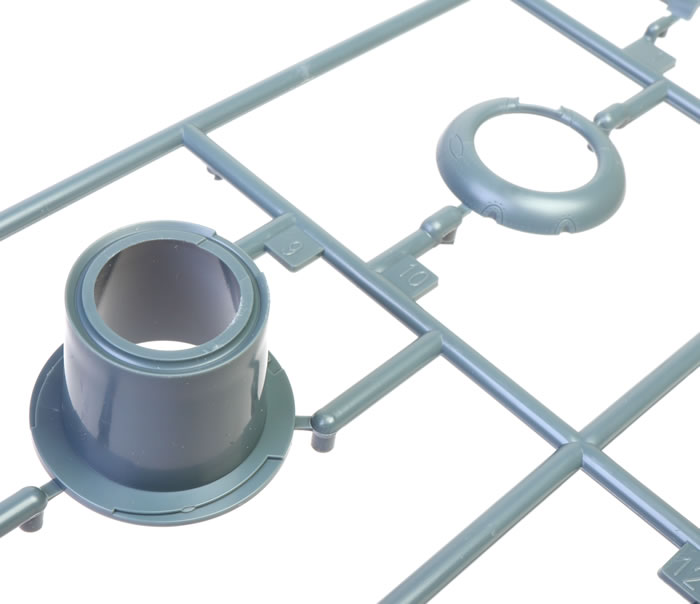
The wings are all-new to reflect the floatplane configuration. They are conventionally presented as a full-span lower section and separate upper halves. In the absence of wheel wells, a nice rigid spar is supplied to glue inside the lower wing.
Positive locating positions are included for the main float and the outriggers.

Ailerons, elevators and rudder are all separate parts. Flaps are moulded shut.
Optional wing-mounted bombs and racks are included.
The floats are simple - certainly simpler than the undercarriage assembly that they replace.
The main float and mount are presented as port and starboard sides with a lower forward insert part to complete the assembly. The Eduard Bunny reminds us to add nose weight to the front of the main float.
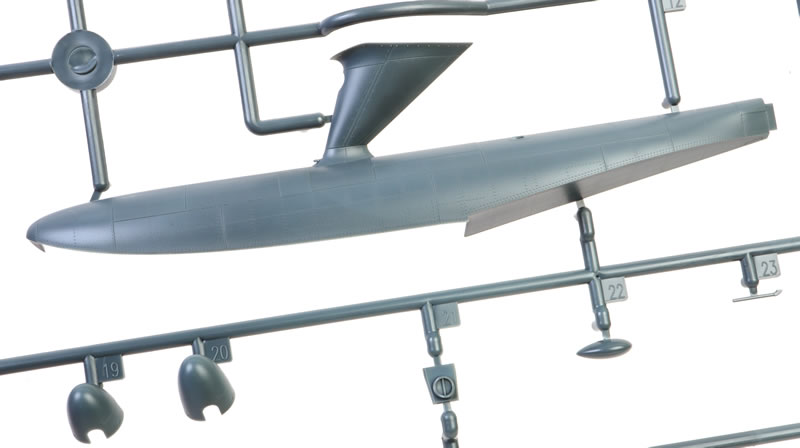
A photo-etched intake grille adds to the detail.
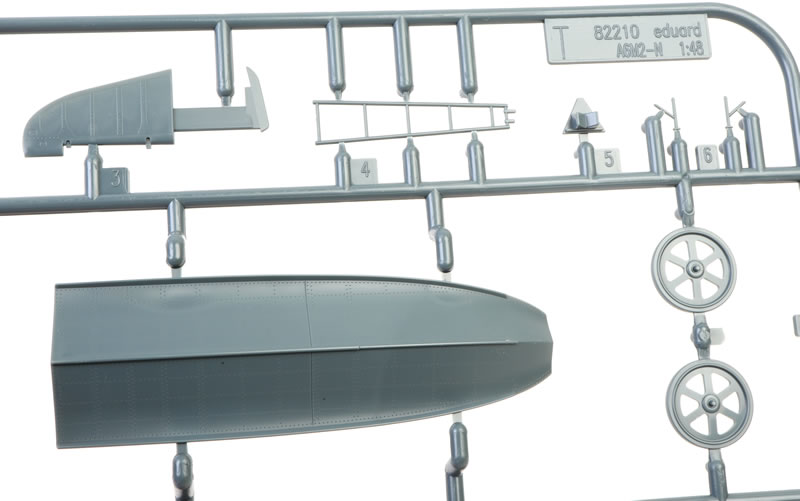
Bracing struts and an optional boarding ladder are also supplied.
The outrigger floats are supplied as two parts each.
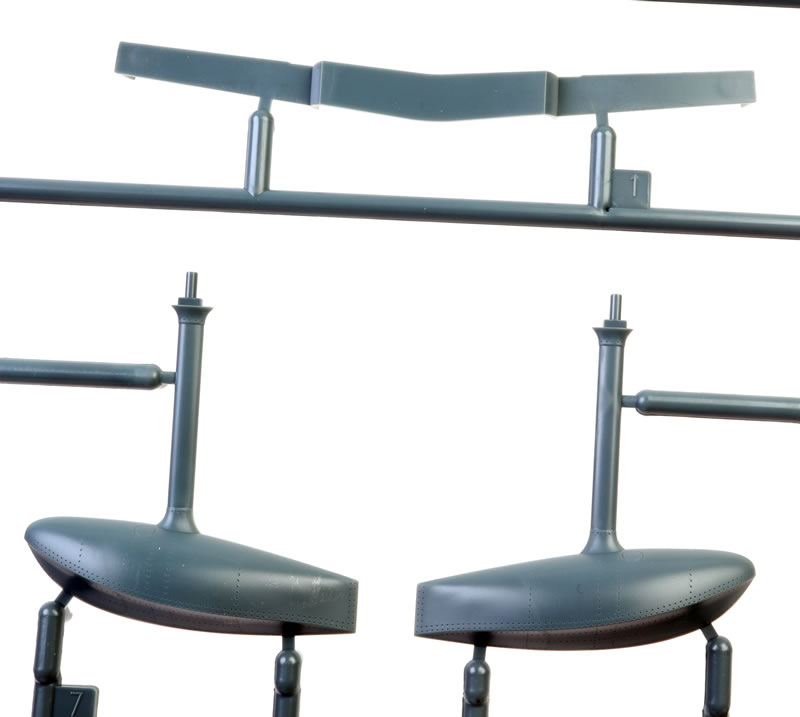
The canopy parts are clear, thin and free from distortion. The canopy may be posed open or closed. Alternative parts are offered for open or closed sliding section.
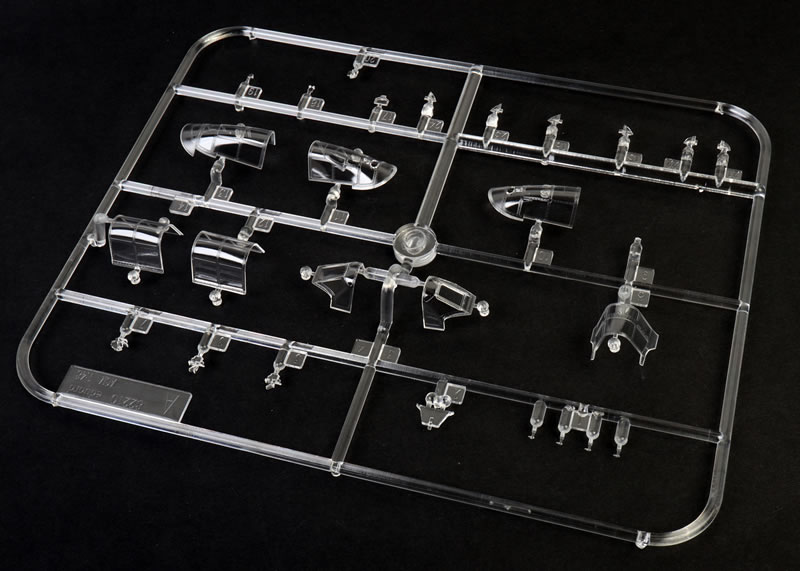
Wing tip navigation lights are supplied as clear parts.
Self-adhesive die-cut masks are provided for the canopy.
The beaching trolley is a nice little model in its own right.
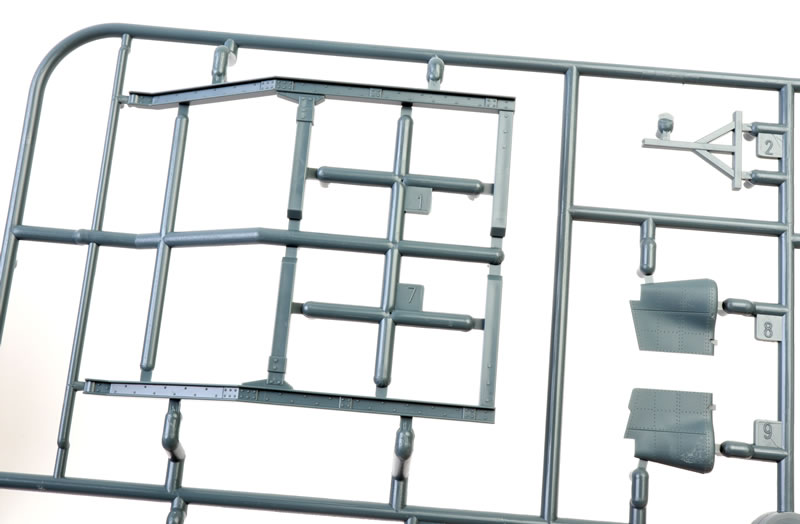
This offers lots of interesting possibilities for vignettes and dioramas.
Markings
Markings are offered for eight aircraft.
The instructions offer four view colour illustrations for all eight options, plus individual histories for each subject.
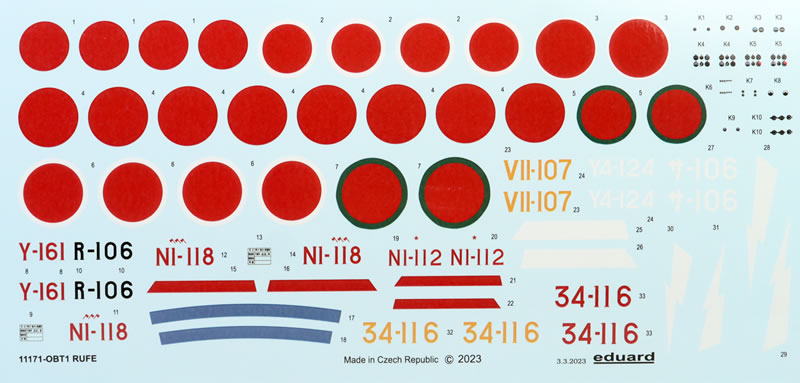
The decal sheet is printed by Eduard. Stencils are also included on two separate smaller sheets.

Printing and registration look good on my samples.
Eduard's 1:48 scale Rufe floatplane maintains the exemplary standards of this prolific Czech company.
The cockpit is comprehensive, surface textures are second to none, and the inclusion of the cowling assembly jig is further evidence of Eduard's commitment to ongoing innovation.
The floats will deliver a strikingly different look, and a nice variety of colours and markings will add to the interest.
With its relatively modest parts count, it looks like it should be a fairly quick build too. I hve built one of Eduard's 1/48 A6M2 Zeros and it was a pleasure from start to finish. I can't imagine that this will be any different.
There is a word for continuous improvement in Japanese - Kaizen. Even starting with a high bar, Eduard demonstrates plenty..
Oh Eduard, you've done it again!
Thanks to Eduard for the sample.
Review Text Copyright © 2023 by
Brett Green
Page Created 6 July, 2023
Last updated
7 July, 2023
Back to HyperScale Main Page
Back to Reviews Page |
